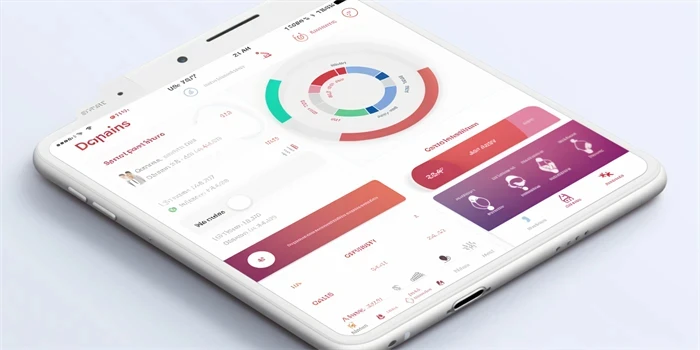Communication is the key to connecting with people from different cultures and backgrounds. However, language barriers often hinder effective communication and can lead to misunderstandings. Fortunately, advancements in artificial intelligence (AI) have given rise to a new solution – AI chatbot apps. These innovative applications are designed to break down language barriers and facilitate seamless multicultural communication. Let’s explore how these AI chatbot apps revolutionize the way we interact and connect with people around the world.

1. Real-Time Translation
One of the most prominent features of AI chatbot apps is real-time translation. These apps utilize AI algorithms to instantly translate text or speech from one language to another. Whether it’s a personal conversation or a business negotiation, these apps can bridge the gap by providing accurate and quick translations. This feature eliminates the need for manual translation, saving time and effort.
Moreover, some AI chatbot apps also offer a voice-to-voice translation feature, where users can speak directly into their device and listen to the translation in real-time. This not only enhances convenience but also creates a more immersive and natural communication experience.
2. Language Learning Assistance
Many AI chatbot apps also serve as language learning assistants. These apps offer interactive lessons, vocabulary drills, and quizzes to help users learn new languages. With their AI capabilities, these chatbots can personalize the learning experience based on the user’s proficiency level and learning goals.
Additionally, some language learning AI chatbot apps leverage natural language processing techniques to provide real-time feedback and suggestions. They can detect pronunciation errors, grammar mistakes, and provide relevant explanations and corrections, enabling users to improve their language skills more efficiently.
3. Cultural Context Integration
Understanding cultural nuances is vital for effective communication. AI chatbot apps are designed to integrate cultural context into conversations, preserving the cultural elements that can often be lost through direct translations. These apps can provide insights into local customs, traditions, and etiquette to help users navigate different cultures with ease.
For instance, imagine you are traveling to Japan and want to know the appropriate way to greet someone. AI chatbot apps can provide not only the translation of Japanese greetings but also the cultural significance and appropriate situations to use them. This knowledge enhances cross-cultural understanding and helps users avoid potential misunderstandings or offensive behavior.
4. Personalized Recommendations
AI chatbot apps analyze user interactions to generate personalized recommendations. For example, if a user frequently communicates with Spanish-speaking contacts, the app might suggest learning Spanish or offer relevant travel, culture, or language resources related to Spanish-speaking countries. These personalized recommendations enhance the user experience and encourage further engagement with different cultures.
5. Travel Assistance
When venturing into a new country, language barriers can pose challenges for travelers. AI chatbot apps equipped with travel assistance features can act as virtual tour guides. These apps can provide real-time translations for street signs, menus, and other foreign-language texts. They can also recommend local attractions, restaurants, and help with transportation options, ensuring a smooth travel experience.
6. Customer Service Support
AI chatbot apps are widely used in customer service to support multilingual communication. Gone are the days when customers had to wait for a human agent who speaks their language. AI-powered chatbots can instantly understand and respond to customer inquiries in multiple languages, providing efficient and round-the-clock support. As these chatbots are trained on vast amounts of data, they can quickly retrieve information and offer relevant solutions to customer problems, improving overall customer satisfaction.
7. Comparison of AI Chatbot Apps
When considering the use of AI chatbot apps, it’s essential to evaluate different options to find the most suitable one for your needs. Some popular AI chatbot apps include Google Translate, Microsoft Translator, and iTranslate. While all these apps offer real-time translation, their user interfaces, additional features, and accuracy may vary. Exploring user reviews and testing multiple apps can help determine which one best suits your requirements.
FAQs:
Q: Are AI chatbot apps reliable for accurate translations?
A: AI chatbot apps have significantly improved translation accuracy, but occasional errors may still occur. It is always advisable to cross-reference translations for critical communications.
Q: Can AI chatbot apps learn slang, idioms, and informal languages?
A: Yes, some AI chatbot apps are trained, sometimes with the assistance of human language experts, to understand and translate informal speech, slang, and idiomatic expressions.
Q: Are AI chatbot apps safe and secure for user conversations?
A: Reputable AI chatbot apps follow stringent security measures to protect user conversations. However, it is advisable to read privacy policies and user reviews before using any app to ensure data privacy and security.
References:
1. Garcia, M., & Rolón-Mondéjar, E. (2020). Artificial Intelligence and Chatbots. In Human-Computer Interaction. Interaction Technologies (pp. 251-259). Springer, Cham.
2. Jauhar, S. K., & Bora, A. K. (2021). Deep Learning Based Chatbot for Efficient Customer Service Support. IOP Conference Series: Materials Science and Engineering, 1150(1), 012060.


